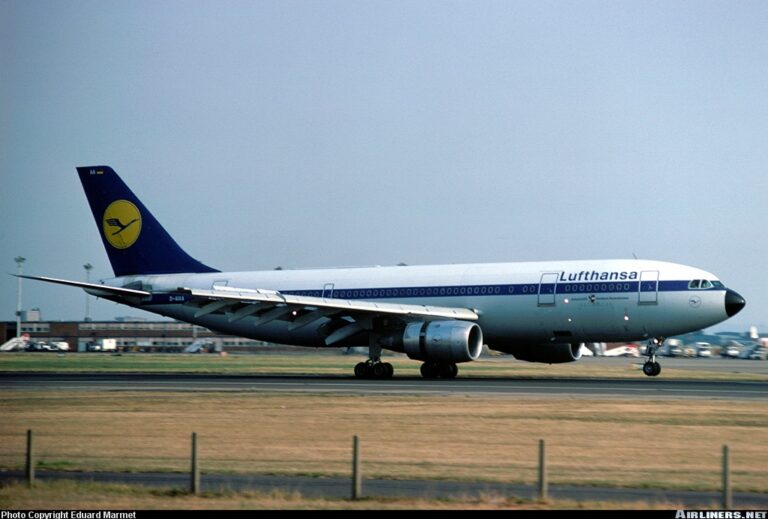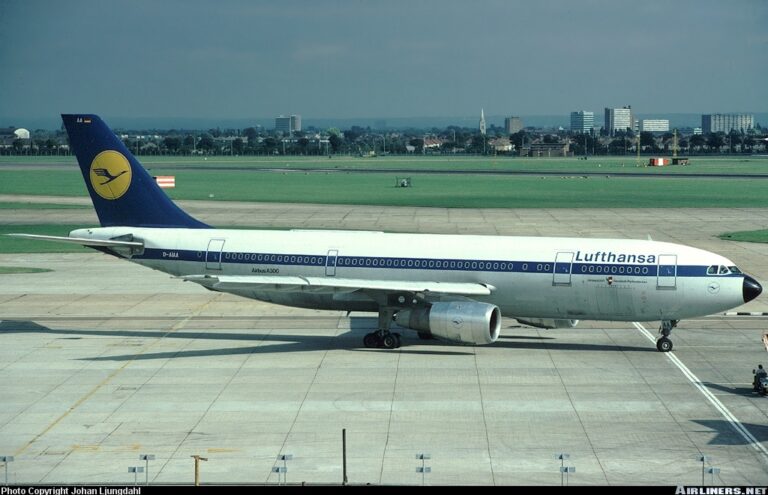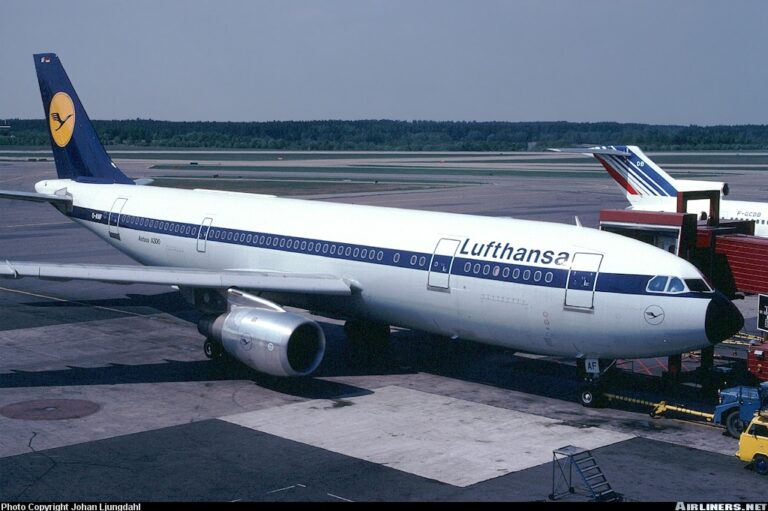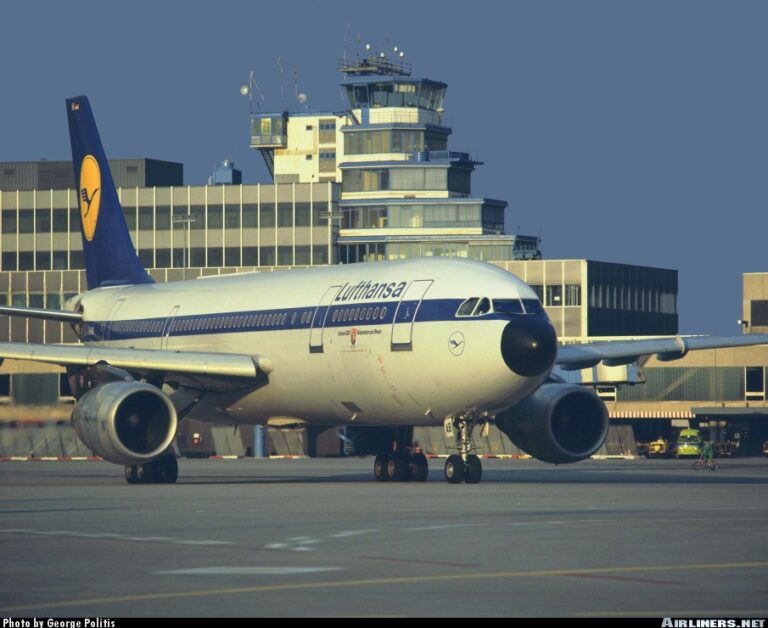
Maquettes

Maquettes

Maquettes

Maquettes

Maquettes

Maquettes


The Airbus A300 is a family of wide-body airliners built by Airbus from 1972 to 2007. The A300 is at the origin of the creation of the Airbus group and is its first marketed model. The Airbus 300 B2 was the first production model, it entered service in May 1974 for Air France. Following the arrival of Pratt & Whitney’s reactors, the manufacturer announced a name change. This was a more logical name, depending on the version, the engine manufacturer and its variant (today, 00-General Electric, 10-CFM International, 20-Pratt & Whitney, 30-International Aero Engines, 40-Rolls-Royce, 50-CFM International (neo), 60-Engine Alliance, 70-Pratt & Whitney (neo) and 80-Europrop International).
The A300B2-100 was the first commercial series version with a short range of action with 137 metric tons of maximum mass at takeoff. Air Inter was one of the first and main customers of this model. In 1979, the French company was attacked because of its high fares. In addition, on September 22, 1981, the SNCF inaugurated its TGV service between Paris and Lyon. Air Inter had to adapt to this situation. In order to increase its productivity, the capacity of the aircraft was increased from 270 to 314 seats, by the removal of two galleys and by the development of nine front seats. Finally, Air Inter satisfactorily exploited 15 copies of the A300B2-1C, in particular by acquiring some used aircraft as well as 6 type B4 and a B2K-3C.
For the A300B2-201/203 models, Airbus developed the A300B2K-3C with the Krueger type spout, that of the B4 version, in order to improve performance during takeoff and landing. Thus, its maximum mass at take-off increased to 142 metric tons. The manufacturer offered this version to South African Airways to serve Johannesburg airport where the air density is still low, due to the altitude (1,700 m) and its high temperature. The first of the 4 copies (MSN32) was delivered on November 15, 1976. As this aircraft was equipped with General Electric CF6-50C2 reactors (2×230.5 kN during takeoff, 2×206.0 kN after) Airbus sold under the name A300B2-203. He also sold 8 copies to Iran Air, 3 copies to VASP and MSN112 for Air Inter, probably due to a cancellation. In addition, 9 other A300B2K-3C were built for Toa Domestic Airlines which was to serve a number of airports with short runways. The General Electric CF6-50C2R reactor (R: reduction) equips these A300B2K-3C, reducing its thrust. Airbus was waiting for more orders for this A300B2-201 version. But, pending the delivery of the A300B4-622R, the company preferred to buy several used A300B4-203, to take advantage of a large community between aircraft. The A300B2-201 was never delivered.
The A300B2-320 was the first Airbus aircraft powered by the Pratt & Whitney reactor, JT9D-59A (2×230.2 kN during takeoff, 2×199.2 kN after). Its masses at no time and on landing were increased. Scandinavian Airlines System, which had a maintenance center for this type of engine at Arlanda airport, received the first of its A300B2-320 on January 15, 1980, in order to optimize its flight capacity between Scandinavian capitals. After all 4 copies were converted to A300B4-120 in 1983, Scanair, its charter subsidiary, benefited from improved autonomy.
In 2014, only six B2 aircraft were operated. They were 3 B2-203 from Iran Air and 3 B2K-3C from Mahan Air. Following the replacement of the Airbus A300 ZERO-G since October 2014, it seems that the operation of the A300B2 has almost been completed.
L’Airbus A300 est une famille d’avions de ligne à large fuselage construits par Airbus de 1972 à 2007. L’A300 est à l’origine de la création du groupe Airbus et constitue son premier modèle commercialisé. L’Airbus 300 B2 fut le premier modèle de production, il entra en service en mai 1974 pour la compagnie Air France. À la suite de l’arrivée des réacteurs de Pratt & Whitney, le constructeur annonça une modification de dénomination. Il s’agissait d’une dénomination plus logique, selon la version, le fabricant du moteur et son variant (de nos jours, 00-General Electric, 10-CFM International, 20-Pratt & Whitney, 30-International Aero Engines, 40-Rolls-Royce, 50-CFM International (neo), 60-Engine Alliance, 70-Pratt & Whitney (neo) et 80-Europrop International).
L’A300B2-100 fut la première version de série commerciale à court rayon d’action avec 137 tonnes métriques de masse maximale au décollage. Air Inter fut l’un des premiers et principaux clients de ce modèle. En 1979, la compagnie française fut attaquée en raison de ses tarifs élevés. De plus, le 22 septembre 1981, la SNCF inaugura son service du TGV entre Paris et Lyon. Air Inter devait s’adapter à cette situation. Afin d’augmenter sa productivité, la capacité de l’appareil fut augmentée de 270 à 314 sièges, par la suppression de deux galleys et par l’aménagement de neuf sièges de front. Finalement, Air Inter exploita avec satisfaction 15 exemplaires d’A300B2-1C, notamment en acquérant quelques appareils d’occasion ainsi que 6 type B4 et un B2K-3C.
Pour les modèles A300B2-201/203, Airbus développa l’A300B2K-3C doté du bec de type Krueger, celui de la version B4, afin d’améliorer les performances lors du décollage et de l’atterrissage. Ainsi, sa masse maximale au décollage augmenta-t-elle jusqu’à 142 tonnes métriques. Le constructeur proposa cette version à South African Airways pour la desserte de l’aéroport de Johannesburg où la densité de l’air est toujours faible, en raison de l’altitude (1 700 m) et sa haute température. Le premier des 4 exemplaires (MSN32) fut livré le 15 novembre 1976. Comme cet appareil était équipé de réacteurs General Electric CF6-50C2 (2×230,5 kN lors du décollage, 2×206,0 kN après) Airbus vendit sous la dénomination A300B2-203. Il en vendit également 8 exemplaires à Iran Air, 3 exemplaires à VASP ainsi que MSN112 pour Air Inter, vraisemblablement en raison d’une annulation. De plus, 9 autres A300B2K-3C furent construits pour Toa Domestic Airlines qui devait desservir un certain nombre d’aéroports ayant des pistes courtes. Le réacteur General Electric CF6-50C2R (R : réduction) équipe ces A300B2K-3C, en réduisant sa poussée. Airbus attendait plus de commande de cette version A300B2-201. Mais, en attendant la livraison des A300B4-622R, la compagnie préféra acheter plusieurs A300B4-203 d’occasion, pour profiter d’une grande communauté entre les appareils. L’A300B2-201 ne fut jamais livré.
L’A300B2-320 fut le premier appareil d’Airbus propulsé par le réacteur de Pratt & Whitney, JT9D-59A (2×230,2 kN lors du décollage, 2×199,2 kN après). Ses masses à vide et à l’atterrissage étaient accrues. Scandinavian Airlines System qui possédait à l’aéroport d’Arlanda un centre d’entretien de ce type de moteur reçut le premier de ses A300B2-320 le 15 janvier 1980, afin d’optimiser sa capacité des vols entre les capitales scandinaves. Après qu’en 1983, tous les 4 exemplaires fussent convertis en A300B4-120, Scanair, sa filiale charter, bénéficia de l’autonomie améliorée.
En 2014, seuls six appareils de type B2 étaient exploités. Il s’agissait de 3 B2-203 d’Iran Air et de 3 B2K-3C de Mahan Air. À la suite du remplacement de l’Airbus A300 ZERO-G depuis octobre 2014, il semble qu’ait quasiment été terminée l’exploitation de l’A300B2.
© DL Cutaway Models. © All Rights Reserved.
Laisser un commentaire